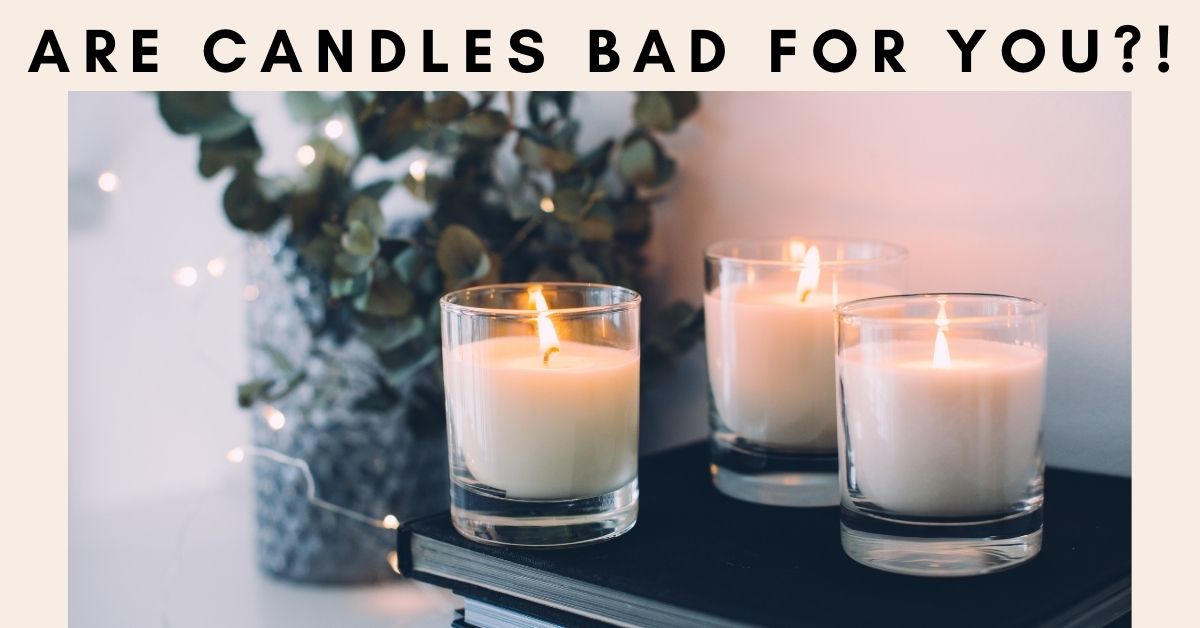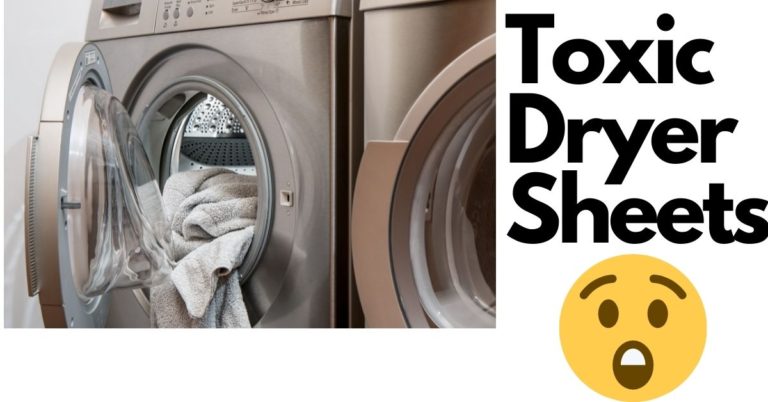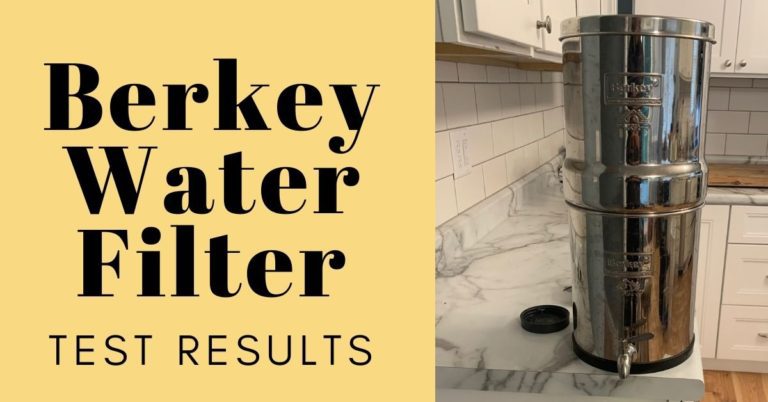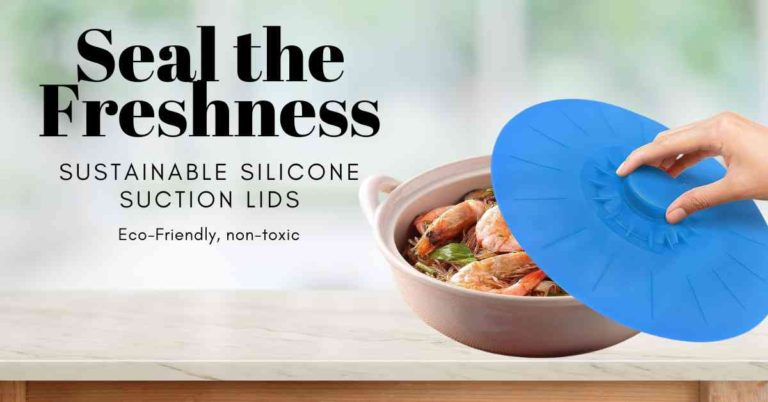What Makes a Candle Bad for You?
I just love the ambiance a candle brings to a room and the calm it brings to my mood. My desire to light a candle becomes even stronger when it starts getting brisk outside, and the days start getting darker way too early in the day. Bring on the hygge!
Before you light that candle or purchase it as a gift for a dear one, make sure you know what’s in your candle. Some candles are bad for you, and some candles are better for you just like most things sold in this world. This post will review what makes a candle bad for you, what are safe materials to look for when making a purchase, the best non-toxic candles for 2022, my favorite candle making recipe if you are the DIY type, and two sneaky candle alternatives you can use.
Why Are Candles Bad for You?
Some candles are better than others, and here are four features of a candle that could potentially be bad for you aka could have negative health effects with long-term exposure.
How to Know if a Candle is Toxic:
- Candle creates soot
- Candle is made from paraffin wax
- Candle has synthetic scent/fragrance added to it
- Candle has a lead wick
From my research, what gets called out the most as being harmful is soot, and the other features of a candle like paraffin wax and added fragrance can make a candle soot more. Lead wicks are banned in the United States, this includes imported products so hopefully this shouldn’t be an issue anymore. Anywho, let’s start this off by reviewing soot.
What is candle soot?
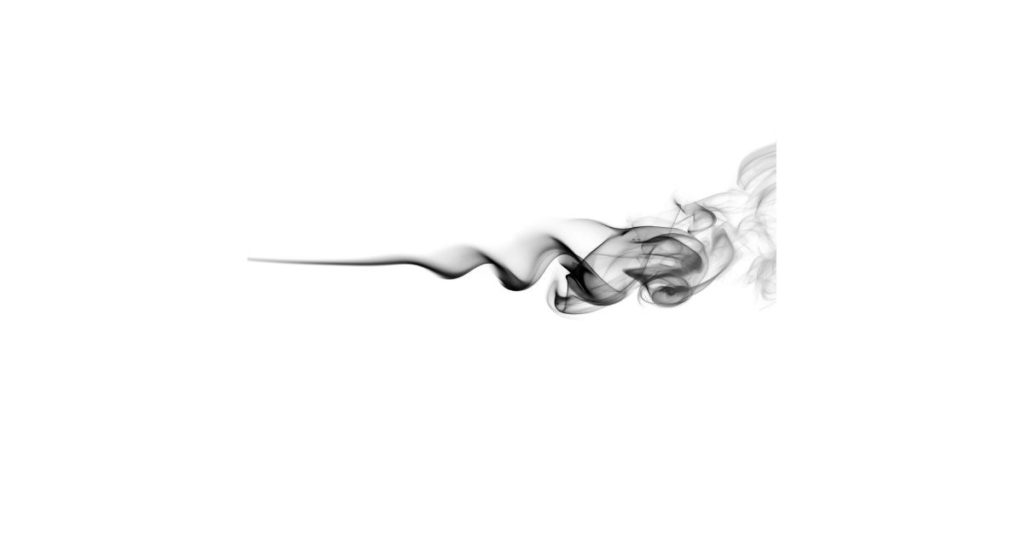
If you see black smoke, black marks on the inside of your candle container, or even black marks near the candle such as a wall then your candle is releasing soot into the air.
According to the U.S. Candle Company soot is defined as:
“Soot from a candle is caused when there is incomplete combustion of the fuel. Incomplete combustion can be caused by a number of different factors. Two of these factors are the balance between the wax and wick in the candle and disturbing the candle flame. The fuel to the candle flame is the liquid wax which is being drawn up through the wick. Once the flame of the candle has started drawing the liquid candle wax up the wick, it does so at a steady rate. When the flame of the candle is disturbed the size of the flame changes and the amount of fuel being used is no longer consistent. If there is too much fuel for the flame to use it is put off in the form of soot.”
U.S. Candle Company
What causes candle soot?

Through my research I’m finding that a well-made, and properly tended to candle usually wouldn’t create soot. Here are the main reasons why a candle may soot:
- Wax additives such as fragrance
- Lack of airflow like when a candle gets close to the bottom of the container
- Too big or too small wick size
- Zinc core wicks
- Flame flickers being in a drafty area
- Candle burns for too long
- Container type
Not all candles are created equal and some candles can produce 100 times more soot than others according to this market analysis and literature review from the EPA.
Why is candle soot bad for you?
Candle soot contributes to indoor air pollution, and we spend most of our time indoors.
According to Environmental Protection Agency (EPA) studies:
“Indoor levels of pollutants may be two to five times — and occasionally more than 100 times — higher than outdoor levels. These levels of indoor air pollutants are of particular concern, because most people spend about 90 percent of their time indoors”
EPA
It’s the accumulation of adding even more pollution to the air that I’m concerned about, and soot will add to the pollution of the air because it creates ultrafine particles, and releases volatile organic compounds (VOCs).
Candle soot creates particles in the air

The particles of soot can be inhaled when airborne, and according to this market analysis and literature review from the EPA “the particles can potentially penetrate the deepest areas of the lungs, the lower respiratory tract and alveoli.” The market analysis study from 2001 noted they did not find research literature on the health effects of residential exposure to candle soot.
However, more recent studies are being done. In 2018, Copenhagen University researchers studied mice and found that “exposure to particles from burning candles caused greater damage than the same dose of diesel exhaust fumes. Effects included lung inflammation and toxicity, arteriosclerosis, and ageing effects on chromosomes in the lungs and spleen.” “We don’t really understand why this is, there must be something special to these candlelight combustion particles,” said Prof Peter Møller, the study’s lead author. The issue is under-researched, he said.”
I’m finding many studies out of Denmark since they have heavy candle usage with their cozy Hygge culture. This study funded by the Innovation Fund Denmark states “
“Candle emissions have been associated with various adverse health effects in humans such as reduced cognitive abilities and negative changes in lung function. Animal studies conducted on mice exposed to candle soot particles are associated with cytotoxicity and inflammation in the lungs as well as telomere shortening in the lung and spleen, a marker for the risk of developing cardiovascular diseases.”
Wiley Online Library
Candle soot releases VOCs

High soot candles can release volatile organic compounds (VOCs). This study detected 8 VOCs, including “Benzaldehyde, n-octane, benzene and 2,5-hexadione were detected at low levels in both of the high-soot systems, with the benzene hovering just above the detection level.” They also note “Even though the high-soot candles generally produced greater levels of emissions than the reference candles, they were still far below the most stringent of the applicable air-quality standards.” It’s a small amount, but it’s still releasing toxic fumes which adds to your indoor air pollution.
The CDC lists the following as health effects from long-term exposure to benzene:
- Benzene causes harmful effects on the bone marrow and can cause a decrease in red blood cells, leading to anemia. It can also cause excessive bleeding and can affect the immune system, increasing the chance for infection.
- Some women who breathed high levels of benzene for many months had irregular menstrual periods and a decrease in the size of their ovaries. It is not known whether benzene exposure affects the developing fetus in pregnant women or fertility in men.
- Animal studies have shown low birth weights, delayed bone formation, and bone marrow damage when pregnant animals breathed benzene.
- The Department of Health and Human Services (DHHS) has determined that benzene causes cancer in humans. Long-term exposure to high levels of benzene in the air can cause leukemia, cancer of the blood-forming organs.
Why is paraffin wax bad for you?
Paraffin wax is a by-product of petroleum, and is created when crude oil is refined into gasoline. It’s used in many things including personal care products, crayons, and candles. When the candle is burned, the wax releases chemicals into the air. Some studies say burning this wax is fine others state to avoid especially if you use candles frequently. I’m finding the issue with paraffin wax is it can create soot, and may release more formaldehyde than other wax types.
According to a NCBI study:
“Burning paraffin candles appears to be the main hydrocarbon initiator, while burning stearin candles results in 50 % lower concentrations. In terms of toxicity, natural wax candles are the least toxic”
NCBI
According to a Springer Link study:
“A considerable amount of soot was produced from the combustion of paraffin candles, but little or none was observed from soywax candles. Compared to paraffin candles, soywax candles burned at a significantly slower rate and required less air. Small amounts of formaldehyde were detected and quantified in the fumes of burning paraffin candles.”
Springer Link
According to a study conducted at the Bayreuth Institute of Environmental Research in Germany:
“The high-soot paraffin and soy candles generated notably higher aldehyde emissions than the corresponding reference candles. Although the total aldehyde emission amounts for the high-soot candles were virtually the same, their aldehyde profiles were different from one another, as well as from their counterpart reference candles. Formaldehyde was the dominant aldehyde with the high-soot paraffin candles.”
Bayreuth Institute of Environmental Research in Germany
Why are lead wicks bad for you?
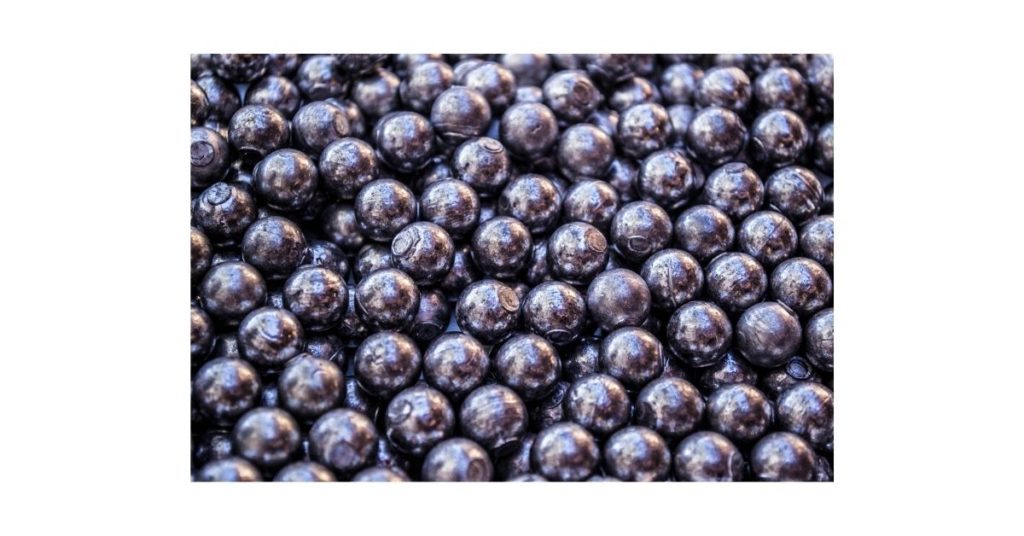
In 1974, US candle manufacturers voluntarily agreed to stop producing lead wick candles, but they were still being found in the marketplace because it was a voluntary effort and not everyone made the change.
However, in 2003, the U.S. Consumer Product Safety Commission (CPSC) stepped in and banned manufacturing, importing, and selling of candles with lead-core wicks because it could cause lead poisoning, with children being at the greatest risk. Thank goodness the CPSC stepped in!
Companies now have safer alternatives to use. This includes non-cored and cored wicks. Non-cored wicks are usually made of twisted or braided cotton. Cored wicks tend to have a core made of paper, cotton, hemp, zinc, or tin with fiber on the outside. I’m finding various candlemakers state that zinc wicks produce more soot, so I would advise to avoid metal wicks in general and stick with cotton.
Here’s what the EPA had to say about zinc wicks:
“Inhaling large amounts of zinc (as zinc dust or fumes from smelting or welding) over a short period of time (acute exposure) can cause a disease called metal fume fever. Very little is known about the long-term effects of breathing zinc dust or fumes (Eco-USA.net, 2000).”
Are Scented Candles Bad For You?
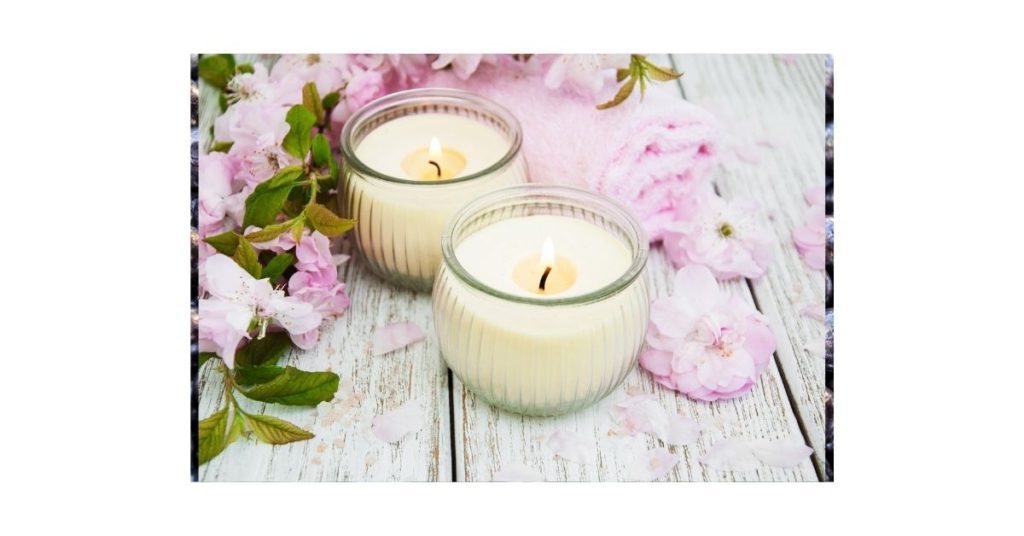
Scented candles are bad for you because they create more soot and more VOCs than unscented candles.
According to the EPA:
“Waxes that have more fragrances in them produce 31 more soot. In other words, candles labeled “super scented” and those that are soft to the touch are more likely to generate soot.”
EPA
There are studies possibly linking scented candles to bladder cancer. Fragrance also contributes to indoor air pollution.
According to this NCBI study:
“Fragranced products have been associated with a range of adverse health effects, such as migraine headaches, asthma attacks, respiratory difficulties, neurological problems, mucosal symptoms, and contact dermatitis.”
NCBI
There is so much evidence out there that synthetic fragrance is bad for you, and one of the main things you can do to live a more non-toxic lifestyle is to avoid products with fragrance. Companies do not have to disclose the ingredients used for fragrance, and there are 3,000 ingredients they could choose from. Hundreds of ingredients could make up the fragrance of the product.
Here is what Safecosmetics.org has to say about the negative health risks associated with fragrance “The International Fragrance Association (IFRA) lists 3,059 materials that are reported as being used in fragrance compounds. Of these 3,059 ingredients, some have evidence linking them to health effects including cancer, reproductive toxicity, allergies and sensitivities.”
Now that we went through the candle concerns, let’s review candle features that are better for you and the best non-toxic candles for 2022.
Which candles are safe for your health?
These are the healthiest type of candle features that you should look for when purchasing a candle:
- Candles made of beeswax, soy, and coconut wax (try for naturally derived or sustainably sourced)
- Candles with 100% cotton wick, avoid those with a metal wire inside the wick
- Candles created with no synthetic fragrance added
- Quality made candles where the maker knows the correct wax type and wick size to use
- Properly cared for candles: Keep wicks trimmed to ¼ inch, keep candles out of drafty areas, and burn for the recommended number of hours
Best Non-Toxic Candles for 2022
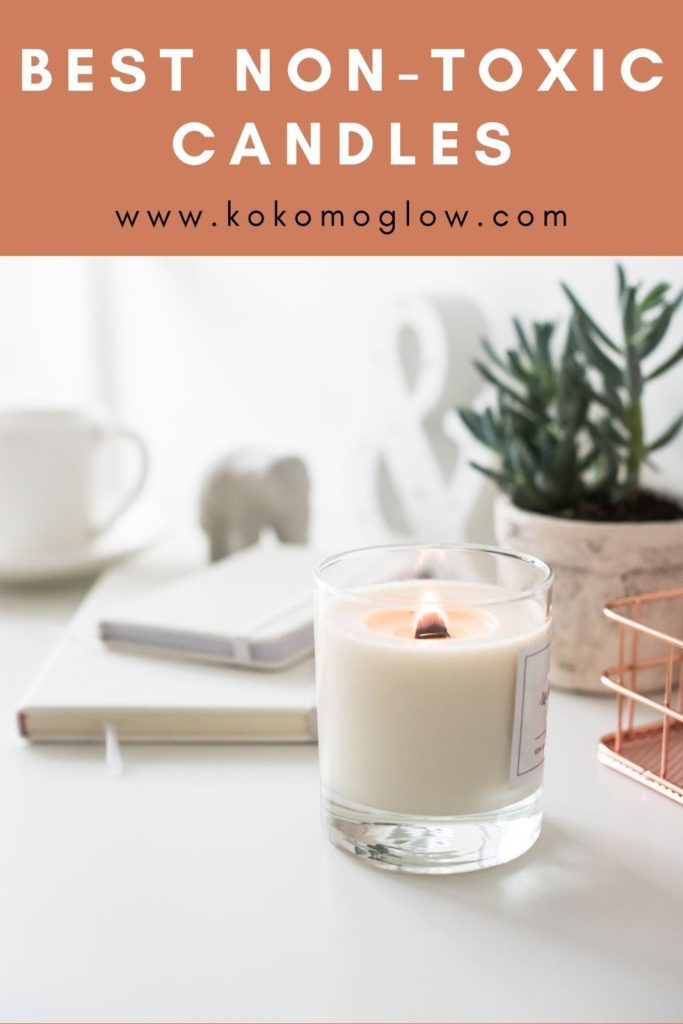
This post contains affiliate links, which means I receive a small commission, at no extra cost to you, if you make a purchase using this link. Please see my disclaimer for more details. Your purchase helps support my work in bringing you information about non-toxic living.
Sanari Plant Based Candles

Here are the things I like about Sanari candles:
- High quality ingredients: Blend of organic coconut + gmo-free soy wax, no pesticides or herbicides used, organic essential oils
- Unbleached cotton wick
- Container is a recycleable stemless wine/cocktain/bourbon glass. The company states after you are done using as a candle, the glass can be washed and used in your kitchen. Zero waste product!
- Packaged in tree-free paper and printed in soy ink
- Company donates a percentage of retail sales to the national breast cancer foundation
- Made in California, USA
Bluecorn Beeswax Candles

Here are the things I like about Bluecorn beeswax candles:
- High quality ingredients: Beeswax, and essential oils. Also has a no essential oil option. Beeswax does have a very mild scent by itself.
- Cotton wick
- Paraffin-Free; Lead-Free; Non-Toxic & Hypoallergenic
- Some say beeswax candles submit negative ions which helps cleanse the air
- Handmade in Colorado, USA
Copper Wings Candle Company
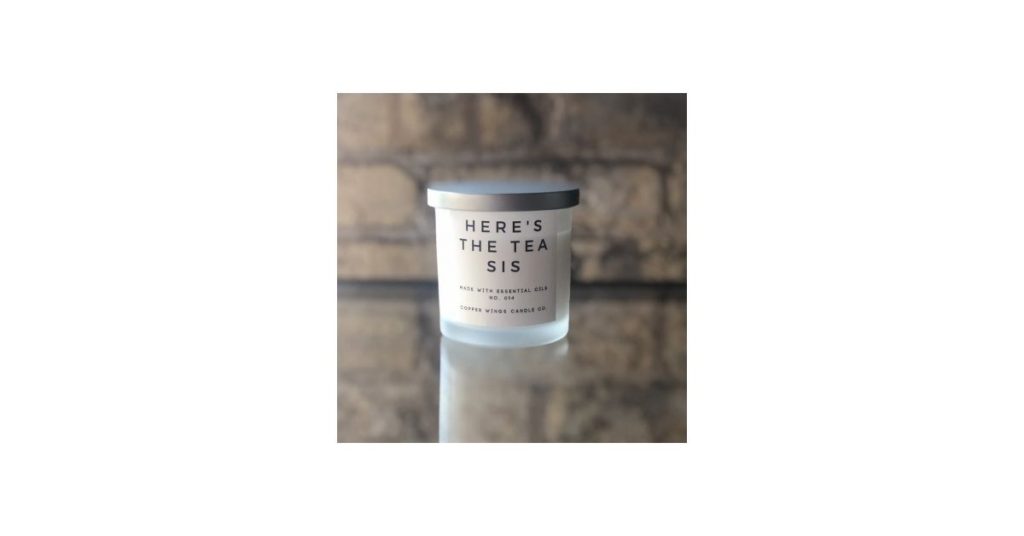
Here are the things I like about Copper Wings candles:
- High quality ingredients: Coconut wax and essential oils
- Use wood wicks which they note as having little to no black soot
- Made in Milwaukee, WI
- Creator strives for a clean, healthy lifestyle and started making non-toxic candles
Candle by the Hour Beeswax Candle

Here are the things I like about Candle by the Hour Beeswax candle
- High quality ingredients: Beeswax
- Unique nostalgic design
- Self-extinguishes when flame reaches the clip
- Cotton wick
Follain Candles
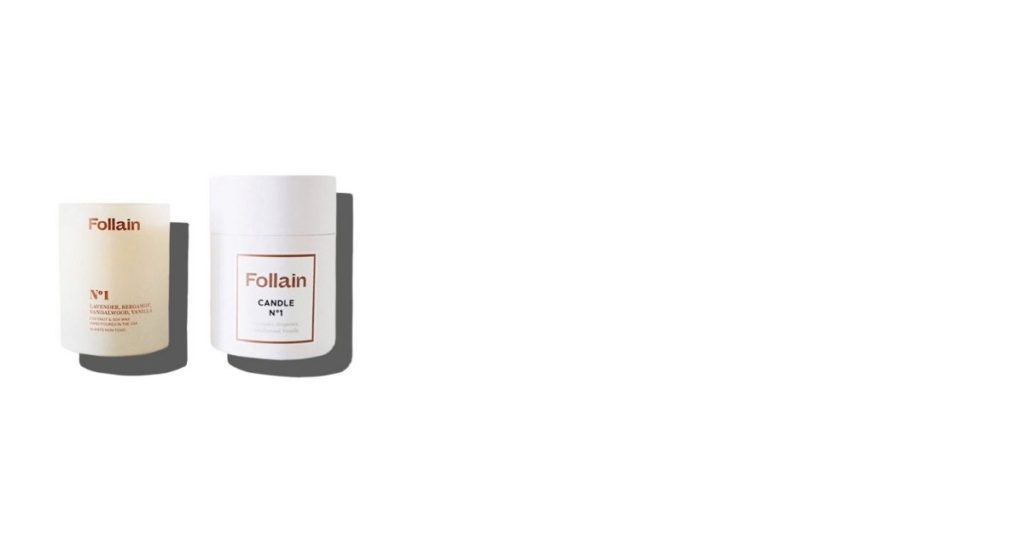
Here are the things I like about Follain candles
- High quality ingredients: sustainable vegetable wax blend, 100% unbleached, US-woven cotton wick (no metal core), essential oils
- Hand-poured in USA
- They are transparent and list their ingredients, and also list their restricted ingredients
How to Make Non-Toxic Candles
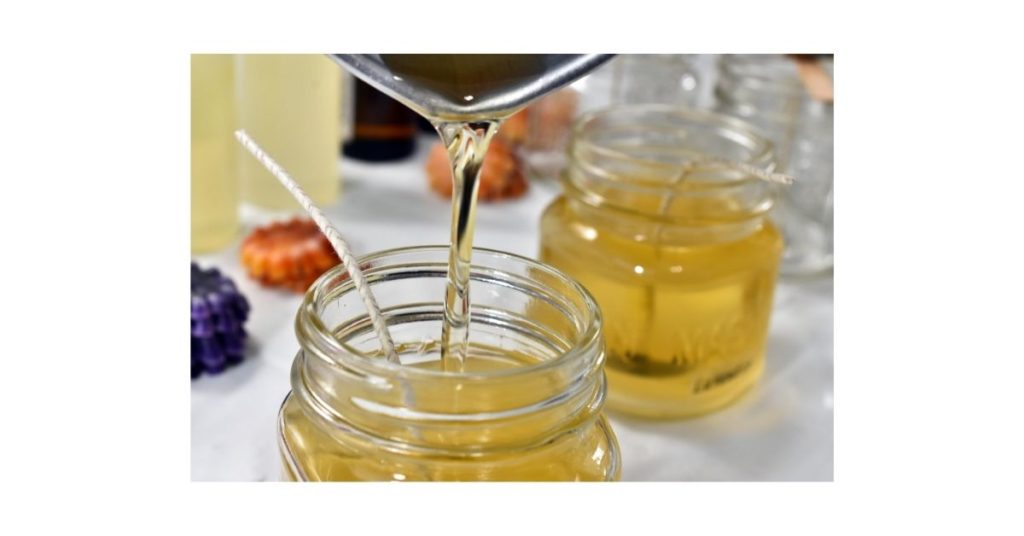
If you are the DIY type, try making your own candles. I went through this phase for a few years, gave them as gifts and even sold them at a craft show, people loved them! It’s a beeswax candle made with coconut oil. Here is the recipe I used from Wellness Mama. Great if you can connect with a local beekeeper and see if they have any spare wax you could use.
Non-Toxic Candle Alternatives
Flameless Candles

I was gifted some flameless candles that I ABSOLUTELY LOVE! I found myself falling asleep with the candle lit so to be on the safe side I was looking for a faux flame that gave me the same ambiance of a candle. These candles look realistic when lit, the flame moves, and the glow gives the same ambiance as a candle. Also cool is it comes with a remote control so you can turn the candles on and off with one button, adjust the flicker, brightness, and set a timer.
Essential Oils
If you like a scent in your house, use a diffuser or put a couple drops on a cotton ball to add a scent to your room. This is the glass diffuser brand that I have and it has worked great! I stopped using essential oils once I was pregnant, and now that I have young kids I have stopped using for now. There are so many benefits from aromotherapy, however with young ones I want to be extra cautious and studies do talk about it adding to indoor air pollution. If you do use essential oils look for high quality oils and ensure you are careful with how you are using them. This post from heathline gives a great summary of essential oils, how to use, and which ones to avoid.
Organic Aromas Essential Oil Nebulizing Diffuser

Final Thoughts
Candles are a beautiful thing and there are so many health benefits like calming the mind, improving your mood, stimulating memory, helping with sleep, and the list goes on. However, there are certain features that go into a candle that can make it harmful to our health, especially with frequent long-term usage. Be sure to avoid candles that soot, use paraffin wax, have metal wicks, and add synthetic fragrance. Instead look for candles made of beeswax, soy or coconut wax, cotton wicks, and no synthetic fragrance added. The candle should be properly maintained and purchased from someone that knows how to make high quality candles.
Would love to know what your favorite candles are, leave a comment below!
Cheers!
Brekke Jo

